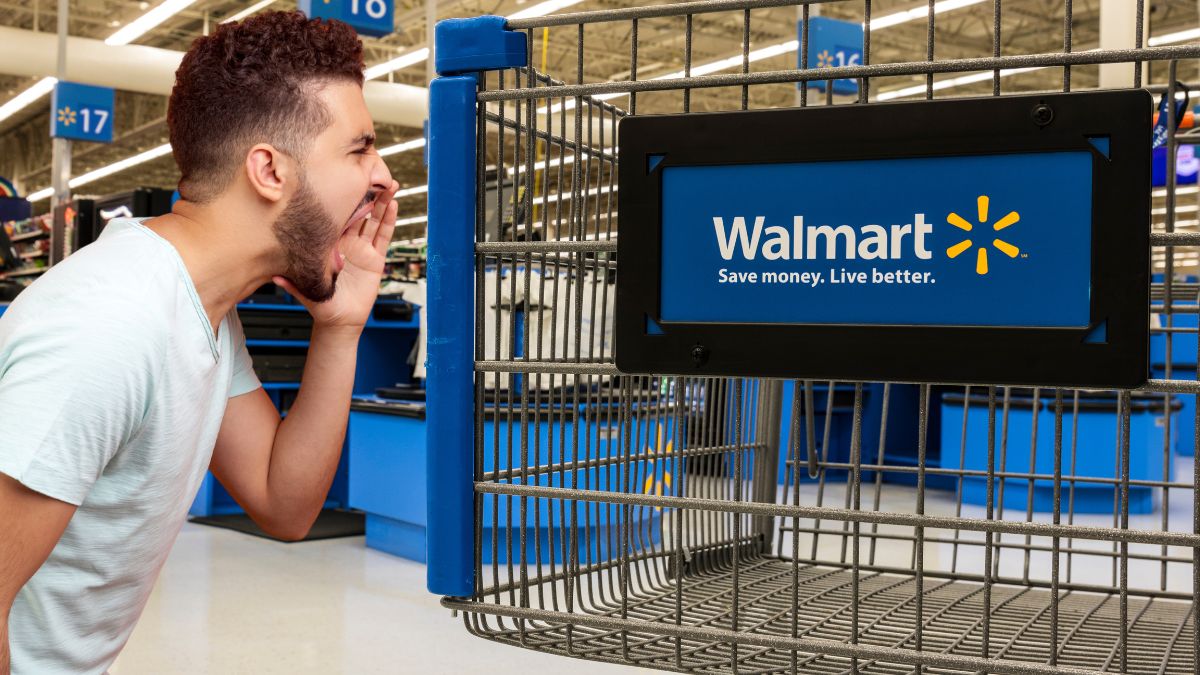Walmart has taken a significant step toward reducing theft at its self-checkout stations, implementing a new feature that benefits honest customers while making life more difficult for would-be thieves.
Walmart’s new self-checkout system
In a recent TikTok video that has garnered over 200,000 views, a Walmart shopper revealed an intriguing discovery. The video shows her scanning Great Value items at a Walmart self-checkout without using a traditional barcode. This revelation has drawn considerable attention online.
@sushiissogoodomg And walmart still doesnt have tap to pay 🙄 #fyp #viral #relatable #greatvalue ♬ original sound – sushiissogoodomg
This cutting-edge feature is the result of Walmart’s partnership with Digimarc, a tech company specializing in advanced barcode technology. Walmart has invested $3 million annually to integrate Digimarc’s innovative solutions into its store operations.
According to Digimarc’s website, the technology embeds codes that are “invisible to the human eye” onto product packaging. These codes are easily detected by self-checkout machines, streamlining the scanning process and making it harder for theft to occur.
In 2022, Walmart expanded its collaboration with Digimarc to further optimize its store operations. This enhancement aims to improve the shopping experience for paying customers while simultaneously deterring theft.
- Invisible Codes: The embedded codes are undetectable to the naked eye, ensuring a seamless shopping experience.
- Enhanced Security: The technology makes it more challenging for thieves to bypass the checkout process.
- Operational Efficiency: The new system helps Walmart streamline its store operations.
As Walmart continues to innovate and introduce new technologies, these advancements promise to enhance the shopping experience for honest customers while effectively curbing theft at self-checkout stations.
According to Digimarc technology partner Datalogic, the scanning speed has significantly increased. In a press release, Digimarc stated, “Hunting for barcodes during the scanning process becomes unnecessary, which eases the self-scanning for customers. The imaging cameras can also pick up several products at the same time.”
Walmart’s Response to Rising Theft
Given these alarming figures, it’s no wonder that Walmart is stepping up its game to make self-checkout machines more efficient at detecting unscanned items. The company faces significant losses, estimated at around $3 billion annually due to theft, as highlighted in a recent report by Gitnux.
Walmart Faces Increasing Inventory Losses
During an earnings call on August 17, Walmart U.S. CEO John Furner disclosed that the issue of shrink—a term that refers to losses in inventory due to theft, damage, and other factors—has been on the rise in their U.S. stores.
“Shrink has increased a bit this year,” said Furner. “It increased last year. It’s uneven across the country.”
These growing challenges have prompted Walmart to enhance its self-checkout technology, aiming to reduce both accidental and intentional theft. By improving these systems, Walmart hopes to better manage inventory and mitigate the financial impact of shrink.
As the landscape of retail continues to evolve, addressing these issues becomes crucial not just for Walmart, but for the entire industry. Enhanced security measures in self-checkout lanes are a step toward a more secure and efficient shopping experience for both retailers and consumers alike.
How do invisible barcodes work and what advantages do they offer to consumers?
Invisible barcodes are a new technology that embeds tiny patterns into product packaging or labels. These patterns are invisible to the naked eye but can be detected by special software and scanners. Here are the key points on how they work and their benefits to consumers:
How invisible barcodes work:
- The barcode is printed as a microscopic pattern on the label or embedded into clear plastic packaging
- The pattern can be repeated across the surface to ensure detectability even if the packaging is damaged
- Special software detects the invisible barcode as the package goes through sorting facilities
- Image-based scanners with cameras read the invisible code. Unlike them, traditional barcode scanners use lasers.
Advantages for consumers:
- Consumers can scan the packaging at home with a smartphone to get information on proper disposal and recycling of the package. This allows companies to better educate and engage customers.
- Speeds up the checkout process in stores since the barcode can be scanned from any angle without having to locate it on the package
- Frees up space on the packaging for branding and marketing content by making the barcode invisible
- Can include more than just the product ID code. It can have extra marketing content.




